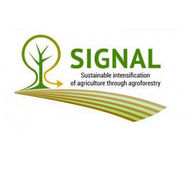Trade-Off between Energy Wood and Grain Production in Temperate Alley-Cropping Systems: An Empirical and Simulation-Based Derivation of Land Equivalent Ratio (2019.0)
Seserman D., Freese D., Swieter A., Langhof M., Veste M.
Agriculture, 9 (7), 147
doi:10.3390/agriculture9070147
Abstract
The alley-cropping systems (ACSs), which integrate parallel tree strips at varying distances on an agricultural field can result, complementarity of resource use, in an increased land-use efficiency. Practitioners’ concerns have been directed towards the productivity of such systems given a reduced area covered by agricultural crops. The land equivalent ratio (LER) serves as a valuable productivity indicator of yield performance and land-use efficiency in ACSs, as it compares the yields achieved in monocultures to those from ACSs. Consequently, the objective of this combined experimental and simulation study was to assess the tree- and crop-yields and to derive the LER and gross energy yield for two temperate ACSs in Germany under different design scenarios, i.e., tree arrangements (lee- or wind-ward) and ratios of tree area to crop area. Both LER and gross energy yields resulted in a convex curve where the maximum values were achieved when either the tree or crop component was dominant (>75% of the land area) and minimum when these components shared similar proportions of land area. The implications of several design scenarios have been discussed in order to improve the decision-making, optimization, and adaptation of the design of ACSs with respect to site-specific characteristics.